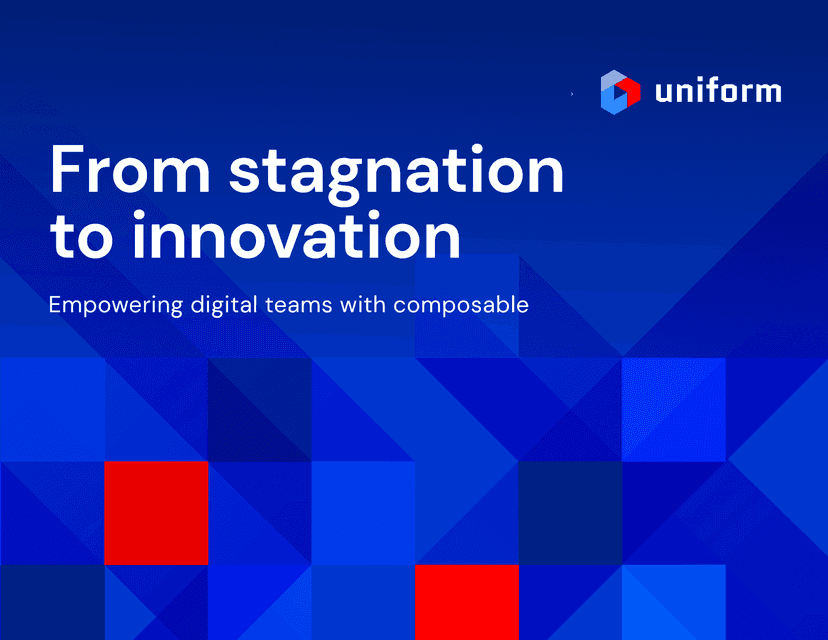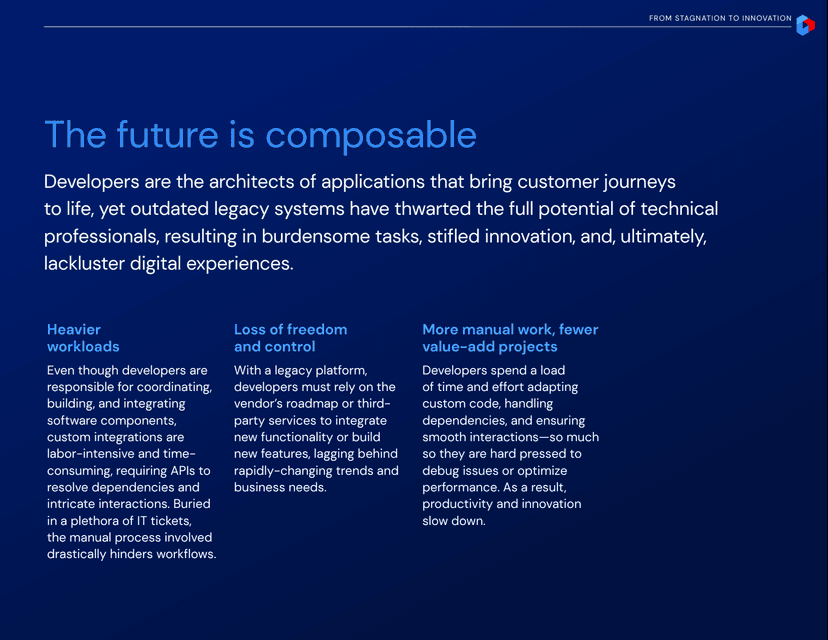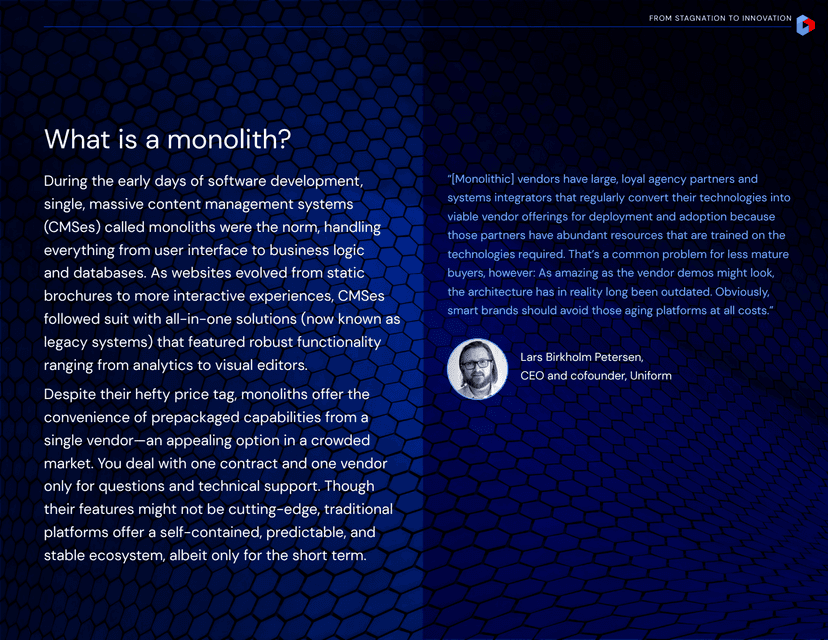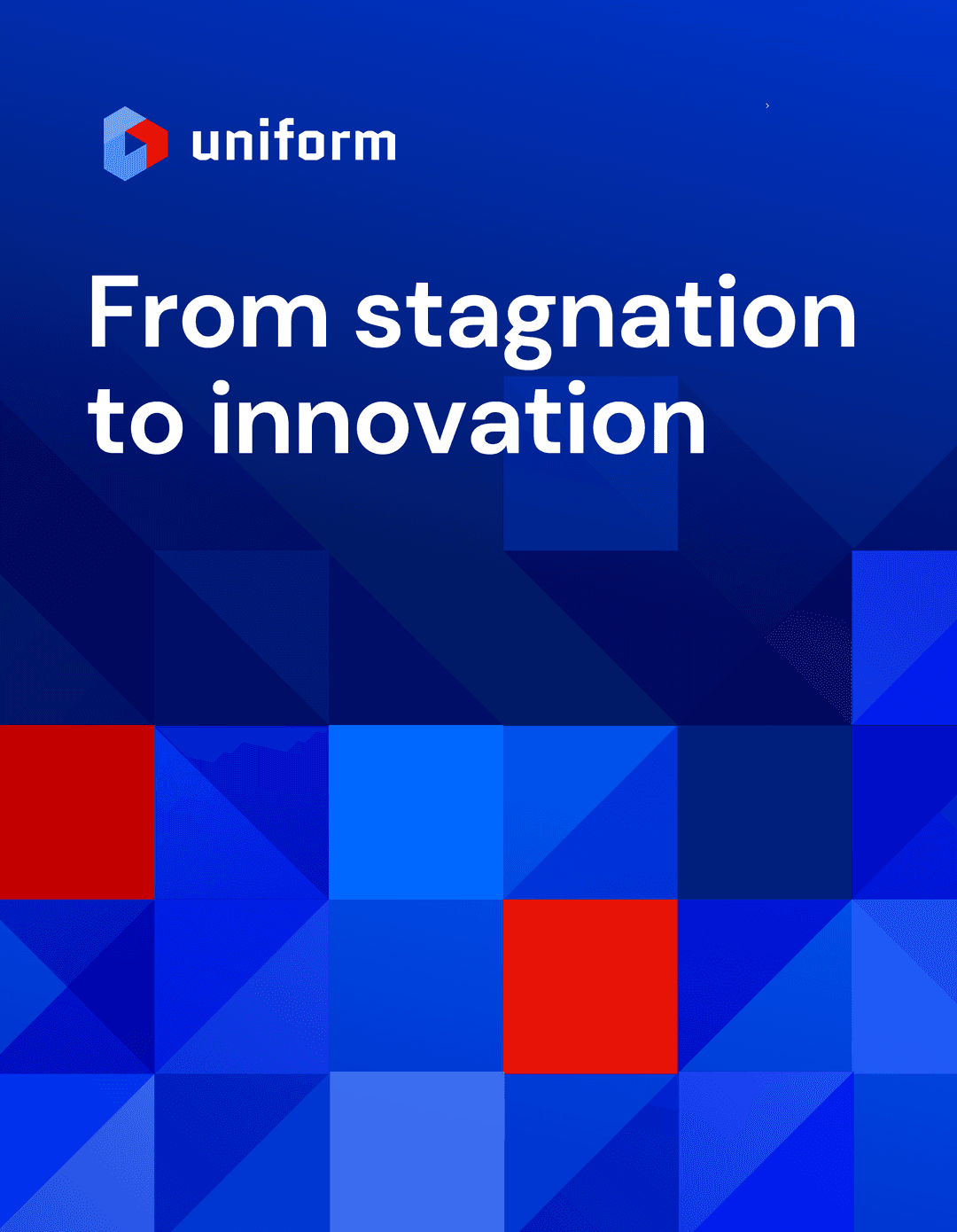Platform
Learn
Company
WHITEPAPER
Outdated systems have long stifled the innovation and productivity of technical professionals, resulting in inefficient workflows, monolithic platforms, and subpar digital experiences. Our comprehensive guide delves into the nuances of digital-experience architecture and highlights the benefits of moving from monolith to composable solutions.
Do consider embracing the agility, flexibility, and scalability offered by composable to unlock value, free your developers from cumbersome tasks, and stay ahead in today’s rapidly-changing digital landscape.
Key takeaways
Thank you for your interest!
If you'd like to learn more, request a demo of Uniform Composable DXP




One
The future is composable
Two
What is a monolith?
Three
The failed promise of monoliths
Four
Navigating the digital-experience architecture landscape
Five
Headless versus composable: What’s the difference?
Six
Composed doesn’t equal composable
Seven
Why composable is the way forward
Eight
Digital experience composition delivers next-generation consumer experiences
Nine
Benefits of a DXCP